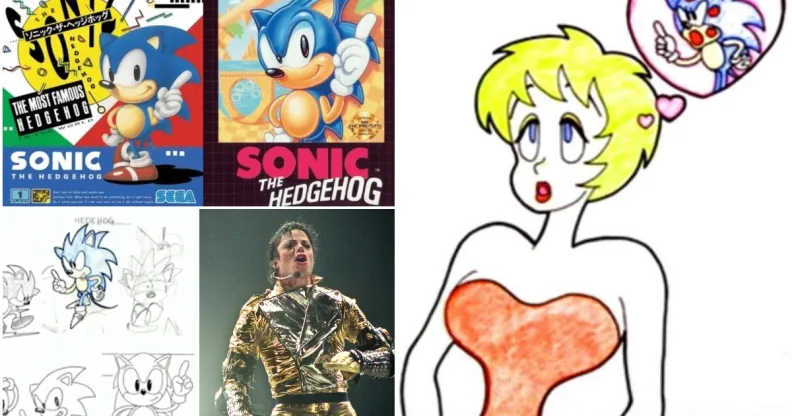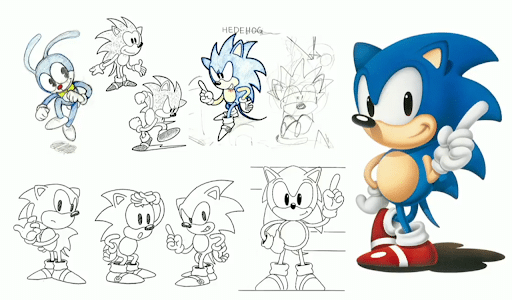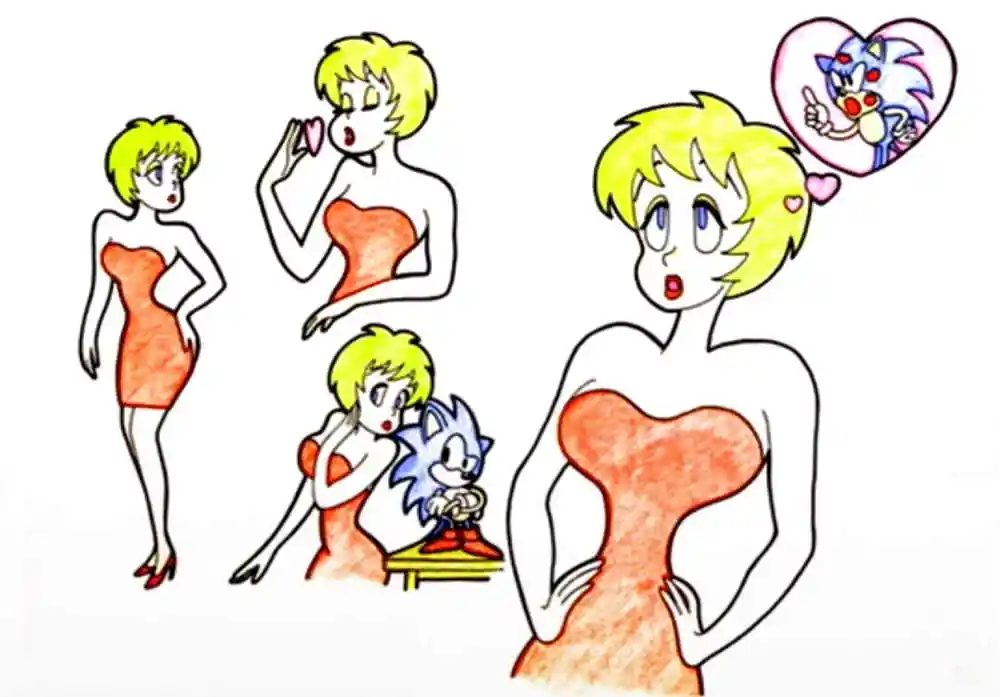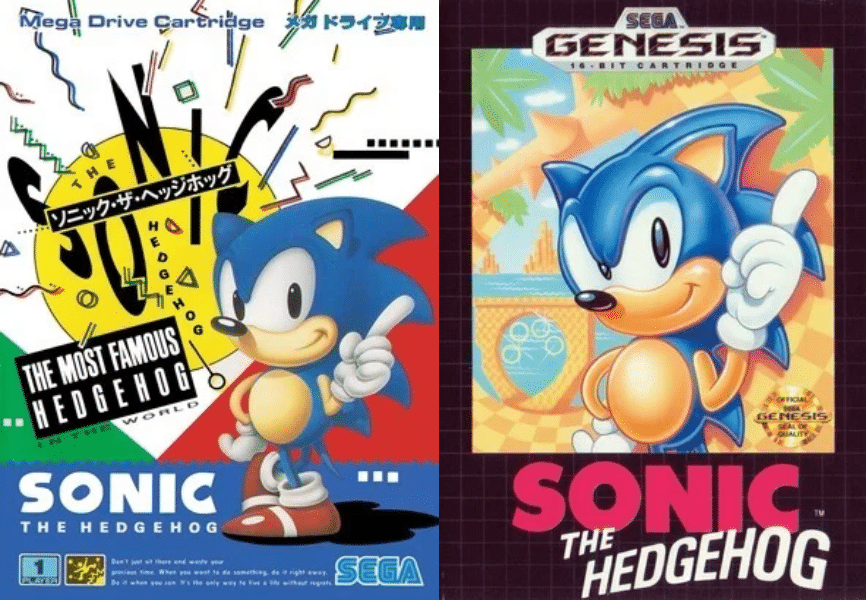Sonic dated Madonna, and four other bizarre facts as the blue hedgehog turns 30

Sonic has been through some… changes over the years
Sonic has been through some... changes over the years
Sonic turns 30 today (23 June), which has made a lot of older gamers feel depressingly ancient.
However, there’s no hiding from the truth: it really has been thirty years since Sonic the Hedgehog debuted on the SEGA Mega Drive on 23 June 1991.
As SEGA sought to compete with the popularity of Nintendo and Super Mario in the early 90s, they designed their own mascot character – the now famous blue blur.
Sonic has gone on to star in countless games ever since, though his popularity has waned in recent years. Those early games established solid 2D gameplay that focused on speed and quick reflexes, combined with a spiky character with undeniable cool. But the leap to 3D was tricky, leading to a slew of poorly-received games.
Still, Sonic remains a video game icon to this day. In celebration, here are some facts and conspiracies from over the years you may not have heard of.
Sonic’s original name was fairly odd
It’s widely known that Sonic was first created to counter the popularity of Super Mario. After all, SEGA’s tagline was that they could do “what Nintendont”.
The character was created by programmer and designer Yuji Naka and artist Naoto Ohshima. Naka was inspired by speedrunning the Mario games and picked a character who would run really fast. That meant Sonic was, initially, actually a rabbit.

Sonic concept design. (SEGA)
Eventually, though, they settled on a hedgehog that could roll into a ball, first known as Mr Needlemouse. That didn’t stop some bizarre inspirations creeping in, though.
Sonic being blue was a direct reflection of the SEGA logo – weird for a hedgehog, but understandable. His shoes, though, were a mixture of Santa Claus and Michael Jackson, specifically his boots from the Bad album (more on Jackson later).
And Sonic’s attitude? That was Bill Clinton. The US President was known for his “get it done” vibe that inspired the speedy and somewhat impatient hedgehog. Perhaps that’s why he became so popular in the States.
Tails has “deep admiration” for Sonic
First introduced in Sonic 2, Tails (a.k.a Miles Prower, gettit?) is the young naive foil to the cool Sonic. According to designer Yasushi Yamaguchi, Tails has a “deep admiration for Sonic”. But does it go further?
The cute little fox who’s forever following Sonic around, Tails – let’s face it – definitely gives twink vibes. The trope of a younger, inexperienced character looking up to a slightly older, mature and cooler character but without quite knowing why they’re so interested is definitely relatable queer content. It’s no wonder that many fans have shipped the two characters together. And you really don’t have to search far to find it.
Of course, SEGA has never confirmed the sexuality of any of the Sonic characters. They’re anthropomorphised animals after all.
Although in early designs…
Sonic originally had a girlfriend
Amy Rose, the pink hedgehog, is known to many as Sonic’s love interest. Having said that, she’s nearly always seen chasing him and he never reciprocates. Maybe he’s into Tails after all?
Originally, though, Sonic was given a human girlfriend. She was named Madonna and was a voluptuous blonde who towered over Sonic who is, after all, a hedgehog. Madonna was axed by SEGA of America though, who felt the character wouldn’t be acceptable for the US market. No s**t.

Sonic’s girlfriend Madonna. (SEGA)
Still, that didn’t stop SEGA from putting the weirdest kiss in the 2006 release Sonic the Hedgehog. Sonic and his animal friends must aid the human Princess Elise and (spoiler) when he dies, he’s revived by a kiss from the princess. That’s right, a young human princess kisses an oversized hedgehog. Gross.
Sonic was very different in Japan
There have been a number of differences between Sonic games in Japan and the US. Take the box art for the original game, for instance, which featured a colourful graphic design in Japan (inspiring the EU version) but in the US featured a slightly harder, cooler looking Sonic character.

Sonic the Hedgehog covers Japan / US. (SEGA)
That Japan/US split continued with two different sequels to Sonic 1. Creators Yuji Naka and Naoto Ohshima parted ways after the first game, with Naka heading to the US. There he formed a new Sonic Team who went on to create the evolutionary Sonic 2. Ohshima, meanwhile, remained in Japan and used the code of the first game as a basis for what became Sonic CD on the Mega CD console add-on.
Speaking of Sonic CD, perhaps the biggest debate in series history among fans is their preference for the Japanese or US soundtracks. Created for the Mega CD, the use of CD media meant more space on the disc for music. The Japanese release had an experimental dance soundtrack inspired by techno and house music, while in the US this was completely scrapped for a new epic rock soundtrack that’s closer to what we now expect from the series.
Even today, fans still argue over their favourites and both soundtracks have brilliant tracks. Either way, “Sonic Boom” is an absolute jam.
https://www.youtube.com/watch?v=EYW7-hNXZlM
Michael Jackson allegedly helped with the Sonic soundtrack
Perhaps the most contested secret in the series, though, is that Michael Jackson allegedly worked on the soundtrack for Sonic 3. Jackson was reportedly a big SEGA fan and he already had a Moonwalker game on the system.
According to a Huffington Post article that details the rumours, Jackson visited SEGA in the US and was asked to write music for the Sonic 3 soundtrack. Yet while the game’s composers claim Jackson was involved, he’s never credited in the game and SEGA never officially confirmed. What’s more, this was in 1993 amid Jackson’s sexual abuse allegations.
Whether Jackson really did work on the soundtrack remains a mystery. But that hasn’t stopped fans discovering similarities between the Sonic 3 soundtrack and Jackson’s oeuvre. The end credits song, for instance, has the same harmonic pattern as “Stranger in Moscow”; Knuckle’s percussive theme bears a resemblance to the beat of “Blood on the Dancefloor”; and the music to Carnival Night Zone has a glass breaking sample and distorted vocals seemingly taken from “Jam”. For even more, check out this comparison from RidersDX on YouTube.
For more gaming news, follow Gaymeo on Facebook. You can also email us with any news or tips on [email protected]

